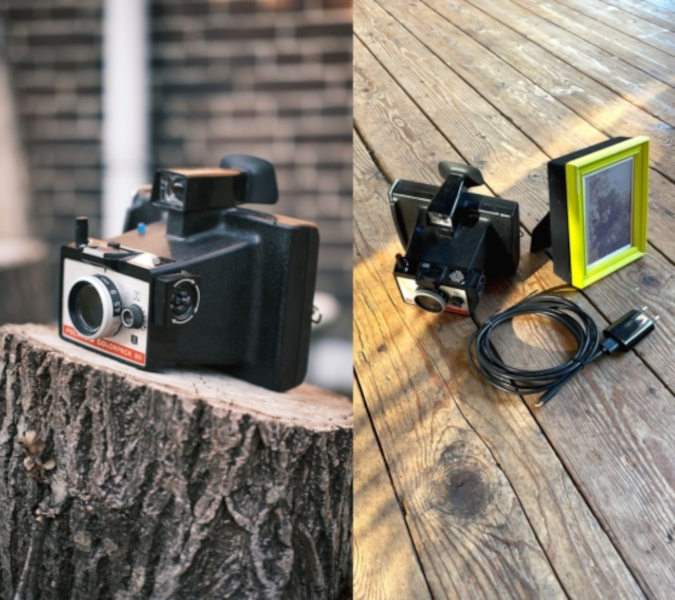For those who didn’t experience it, it’s difficult to overstate the cultural impact of the Polaroid camera. In an era where instant gratification is ubiquitous, it’s easy to forget that there was a time when capturing a photograph meant waiting for film to be developed or relying on the meticulous art of darkroom processing. Before the era of digital photography, there was nothing as close to instant as the Polaroid. [Max] is attempting to re-capture that feeling with a modified Polaroid which instantly develops its pictures in a remote picture frame.
The build is based on a real, albeit non-functional, Polaroid Land Camera. Instead of restoring it, a Raspberry Pi with a camera module is placed inside the camera body and set up to capture pictures. The camera needs to connect to a Wi-Fi network before it can send its pictures out, though, and it does this automatically when taking a picture of a QR code. When a picture is snapped, it sends it out over the Internet to wherever the picture frame is located, which has another Raspberry Pi inside connected to an e-ink screen. Once a picture is taken on the camera it immediately shows up in the picture frame.
To help preserve the spirit of the original Polaroid, at no point is an image saved permanently. Once it is sent to the frame, it is deleted from the camera, and the next picture taken overwrites the last. And, for those who are only familiar with grayscale e-ink displays as the integral parts of e-readers, there have been limited options for color displays for a while now, as we saw in this similar build which was painstakingly built into a normal-looking picture frame as part of an attempted family prank.
















> To help preserve the spirit of the original Polaroid, at no point is an image saved permanently.
If I remember correctly, Polaroids WERE permament photos, just developed in minutes right from camera.
I guess they meant this in the sense that there’s no saved negative you can use to make further copies of the photo, once the e-ink is “exposed” that’s the only copy you have. The analogy would be closer with multiple e-ink screens to represent multiple bits of polaroid film, but that’s a bit wateful of reusable e-ink.
Though maybe that’s the next step: multiple screens which get exposed successively so you can have multiple images, and once you hit the last one it rolls over to the first screen again.
Polaroid type 55 film produces both positive and negative images.
Yeah this is a bit too hipster for me. The exact same thing could be done from a mobile phone to one of hundreds of cheap digital picture frames found at your favorite Chinese online retailer.
“Instead of restoring it, a Raspberry Pi with a camera module is placed inside” – Spot on!
While other articles here have mentioned “restoring” vintage radios and other equipment by ripping the guts out (try that on your own body and see how “restored” you feel), this is now facing up to the fact that it’s “attempting to re-capture that feeling”, and “preserve the spirit of the original Polaroid”, rather than “restoring” anything. Still, for “those who didn’t experience it”, it is a feeling worth recreating.
At the “To help preserve the spirit of the original Polaroid” section, I was expecting to read about the image slowly emerging from a grey mist. The refresh rate of epaper is slow, but not Polaroid slow.
For me that wait was probably the best part, anticipating whether or not you actually got the picture you wanted
Alternatively you could just go get a Polaroid camera (you can find the classic 600 series for 30 bucks online, in working order), get some film and actually have a physical photograph… Other than an interesting tech demo, I don’t see the appeal